Ch8 Welfare Economics and the Gains from Trade¶
efficiency criterion (Jeremy Bentham): total pie bigger
Pareto criterion: everyone's pie bigger
efficiency criterion = potential Pareto criterion???
Subsidies¶
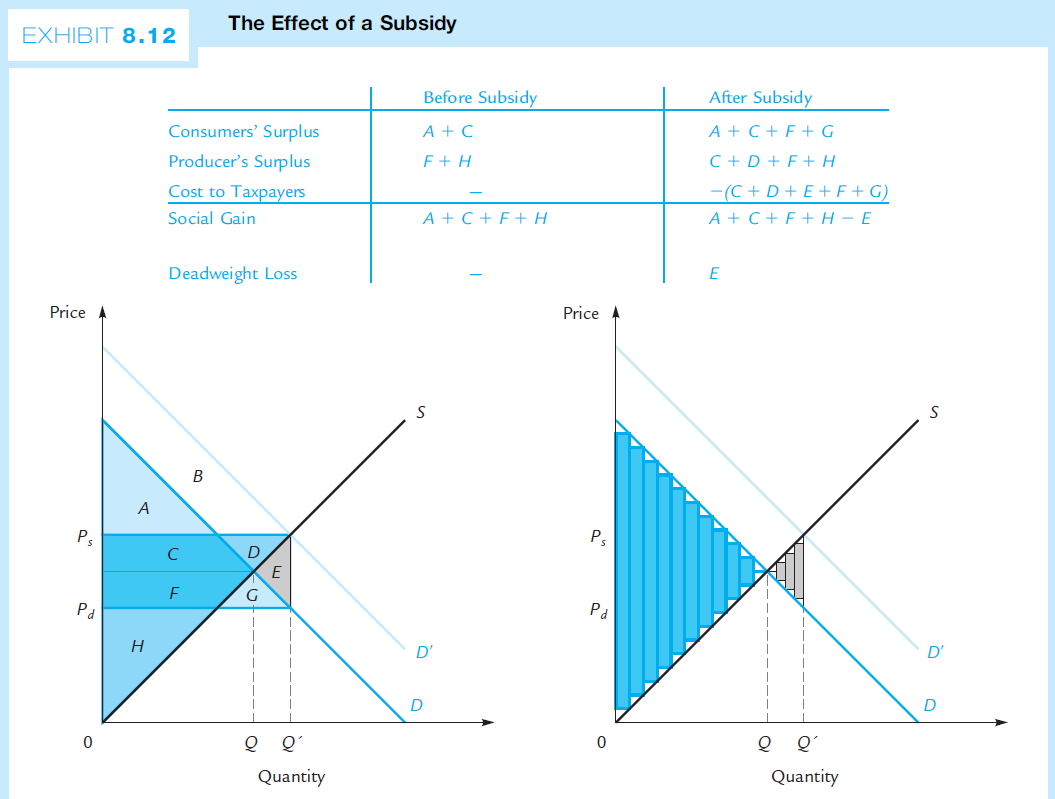
price ceiling¶
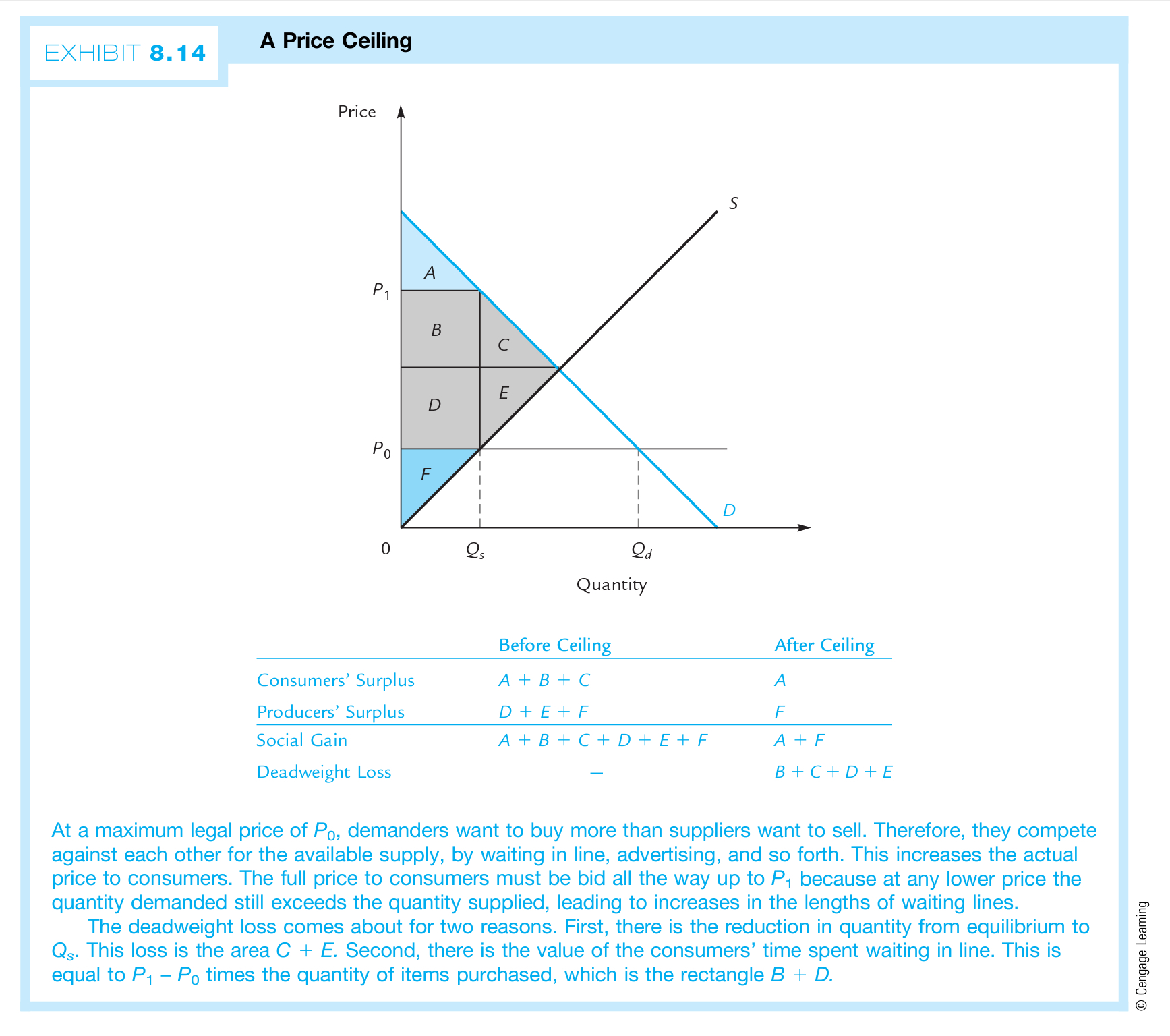
At a price of P0, consumers want to buy more goods than are available. Therefore, ==they compete with each other to acquire the limited supply==. Depending on the nature of the good, this may take the form of standing in line, searching from store to store, advertising, or any of a number of other possibilities. All of these activities are costly, in time, gasoline, energy, and other currency, and these costs must be added to the “price” that consumers actually pay for the item.
How high does the price go? ==It must go to exactly P1 in Exhibit 8.14. At any lower price the quantity demanded still exceeds Qs, and consumers intensify their efforts.== Only when the “price” reaches P1 does the market equilibrate. Of course, even though P1 is the price paid by consumers, the price received by suppliers is still P0. Therefore, we use P1 to calculate consumers’ surplus and P0 to calculate producers’ surplus. In each case, the appropriate quantity is Qs, the quantity actually traded. The computations are shown in Exhibit 8.14
tariff¶
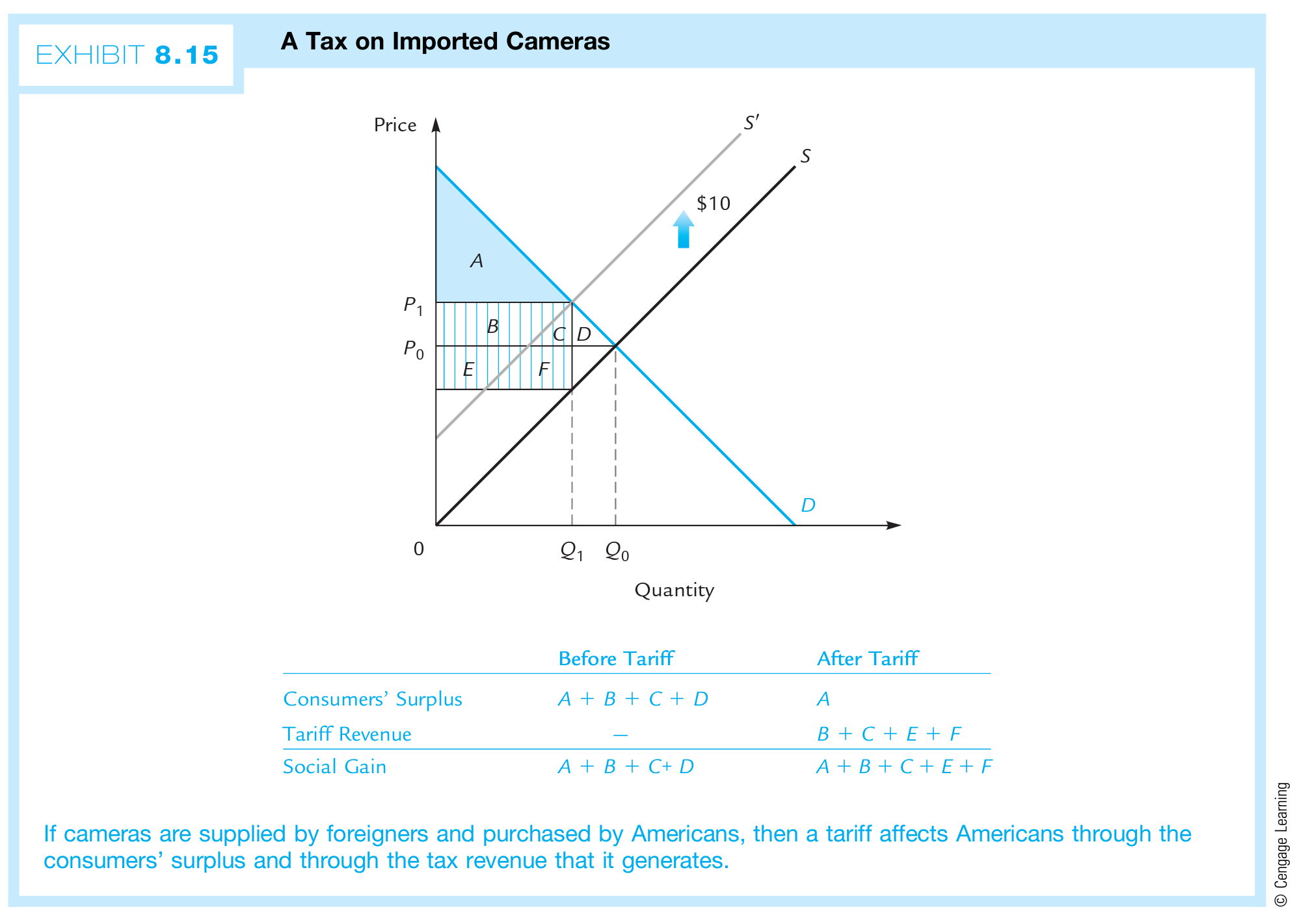
after tariff, seller 賺到 Q~0~'處,實際成交到 Q~1~' 處,so tariff revenue = (Q~1~'-Q~0~')×500
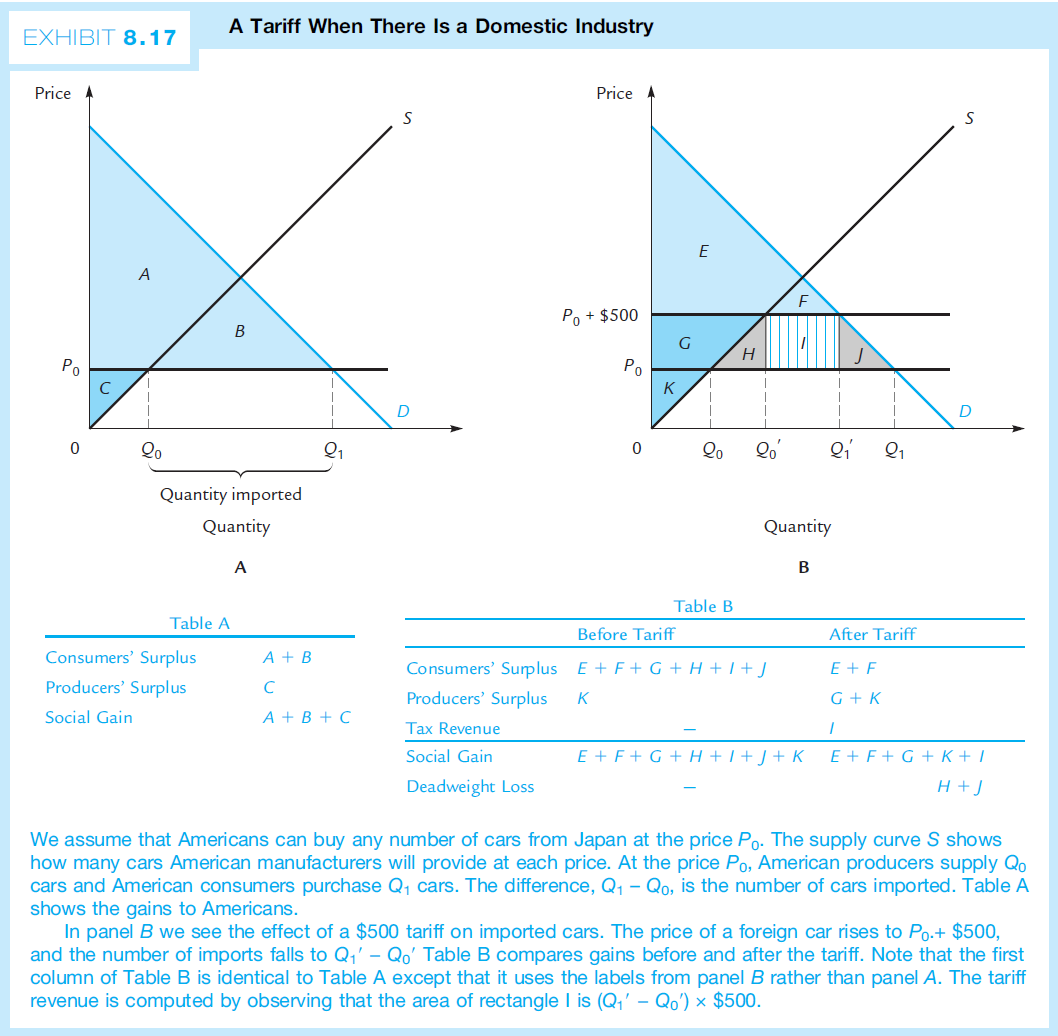
general equilibrium¶
Edgeworth box¶
endowment point: 初始位置(情況)
Bob’s endowment point (measured along his axes) is the same as Aline’s endowment point (measured along her axes)
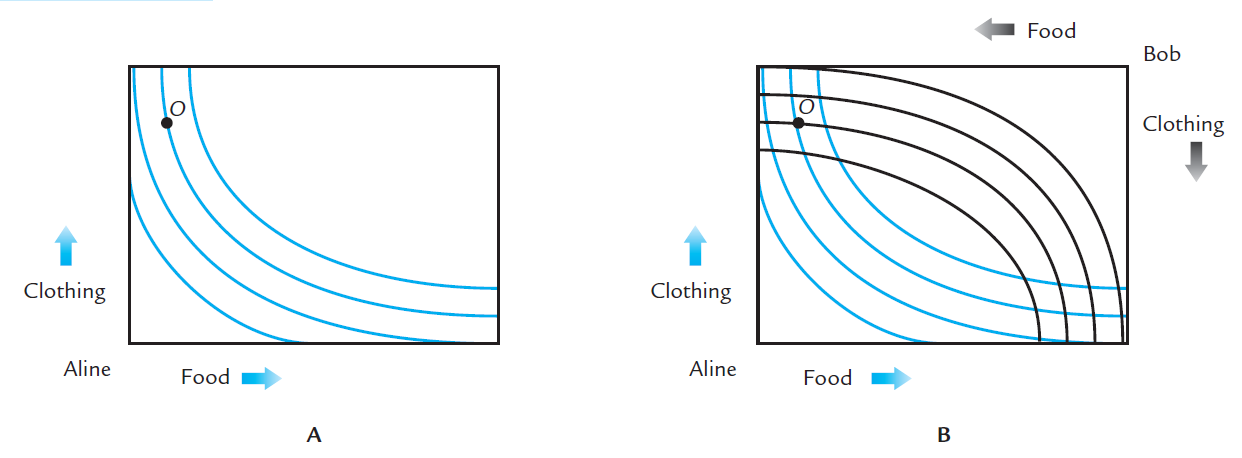
D: region of mutual advantage
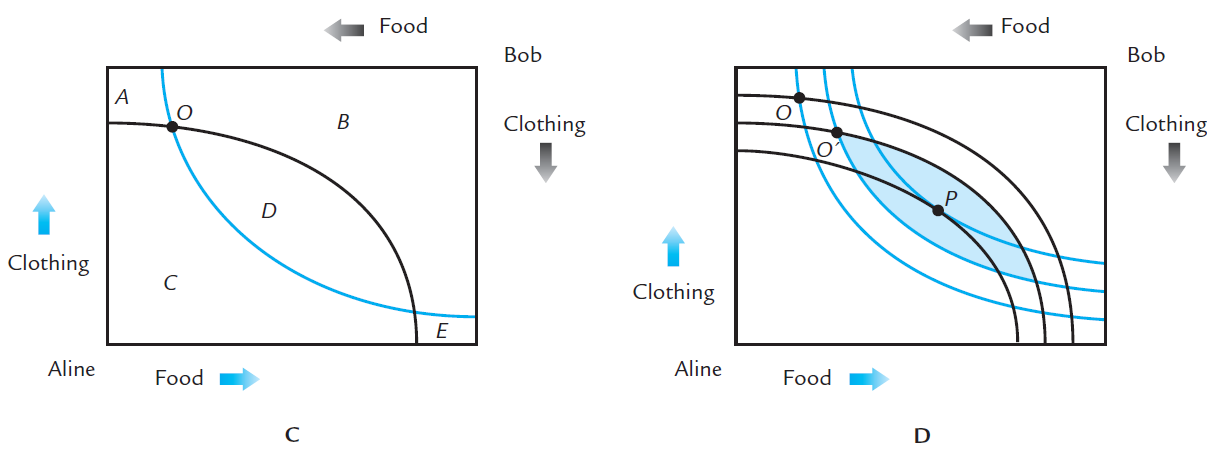
P is Pareto optimal
every point on contract curve is Pareto optimal
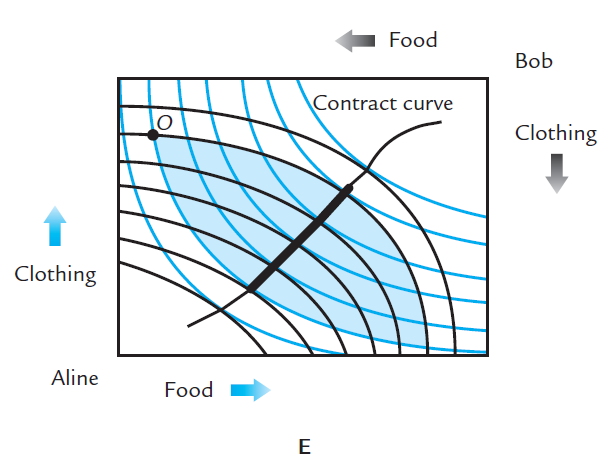

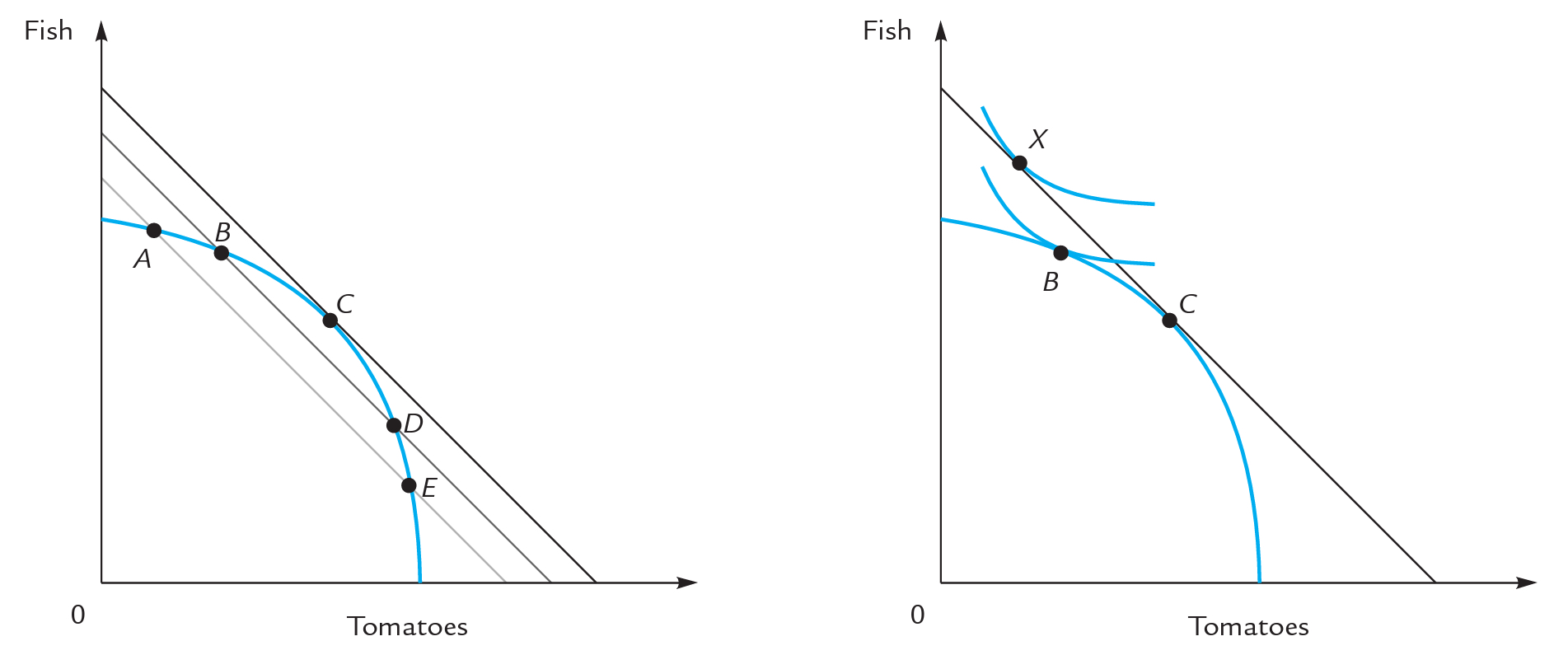
without trade: choose B → autartic relative price
with trade: choose X (trade along the budget line) → world relative price
MRS > MRT then 改善

U、V 為兩人的效用函數
X0、Y0 為兩商品總量
Homework¶

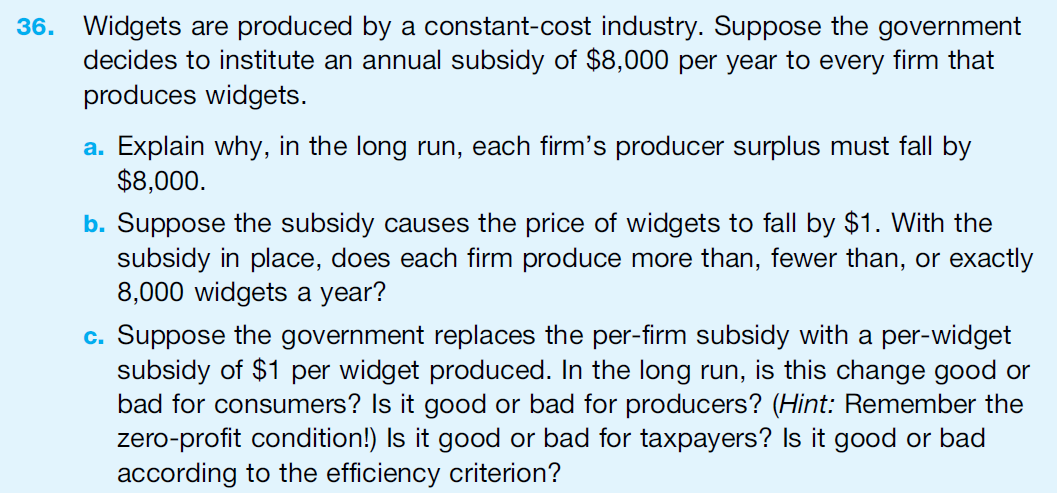
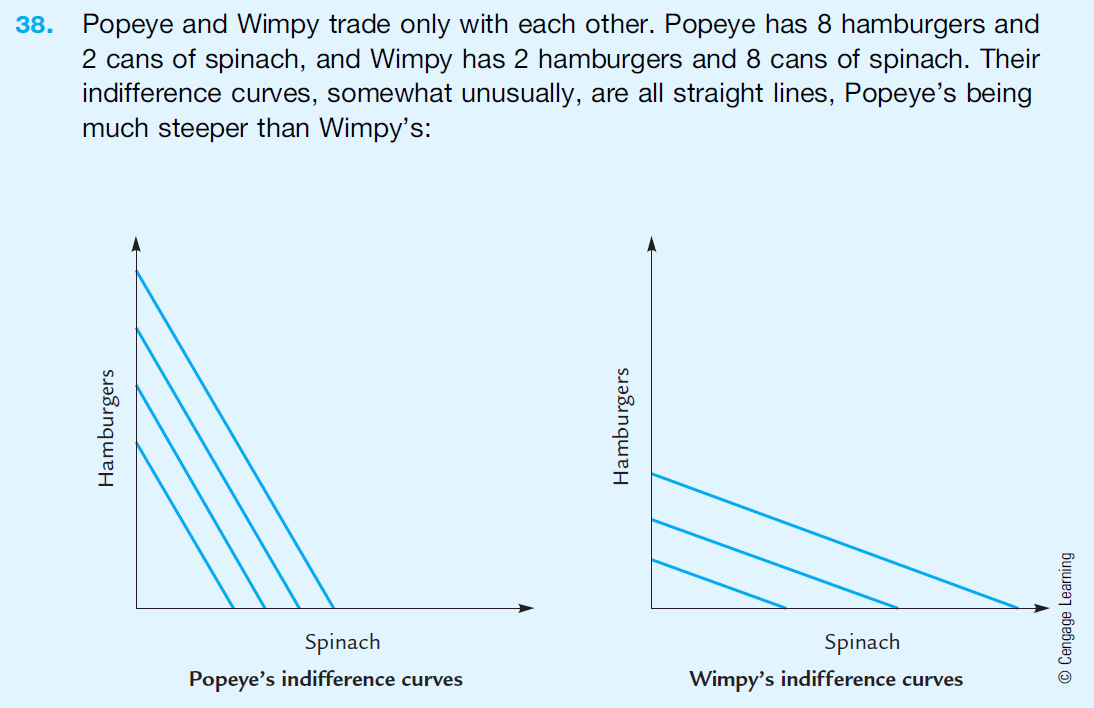

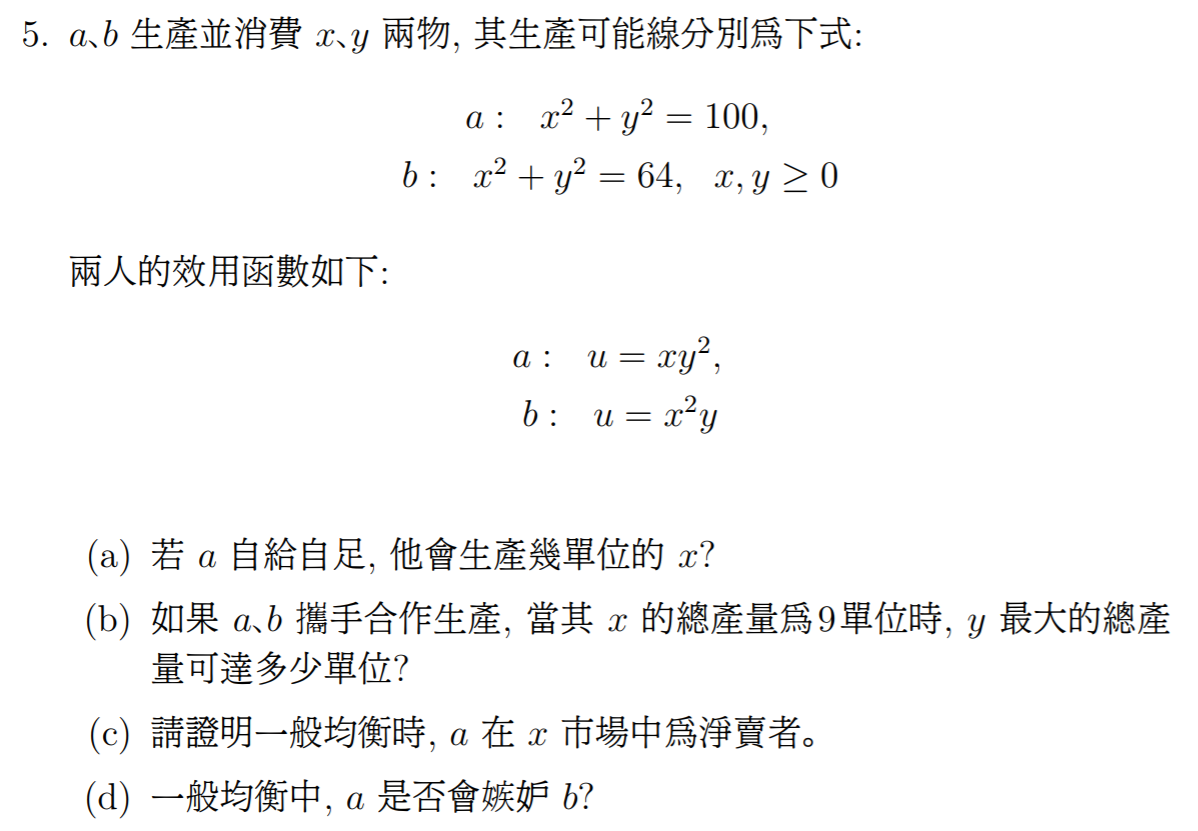
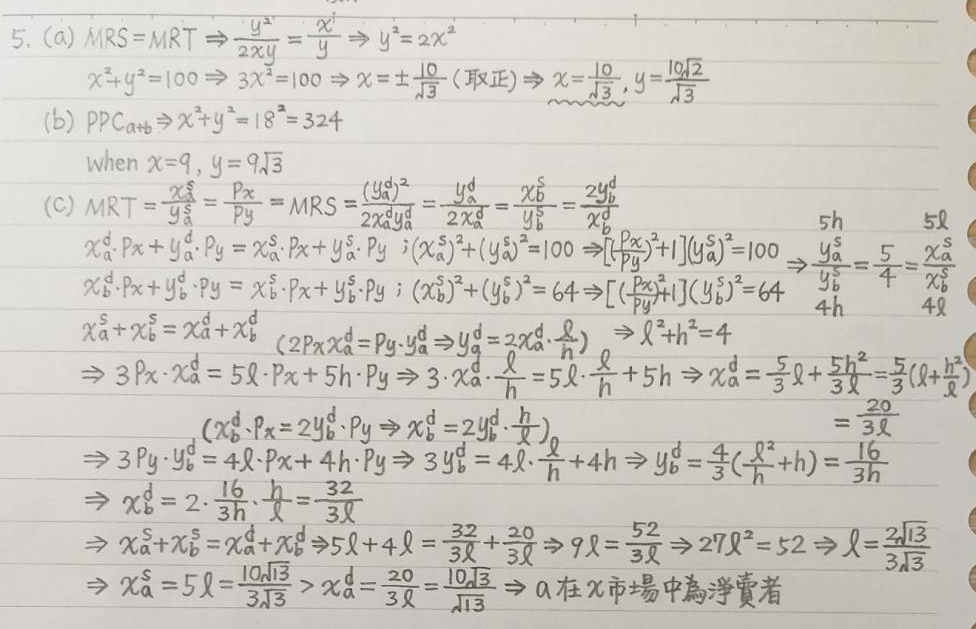
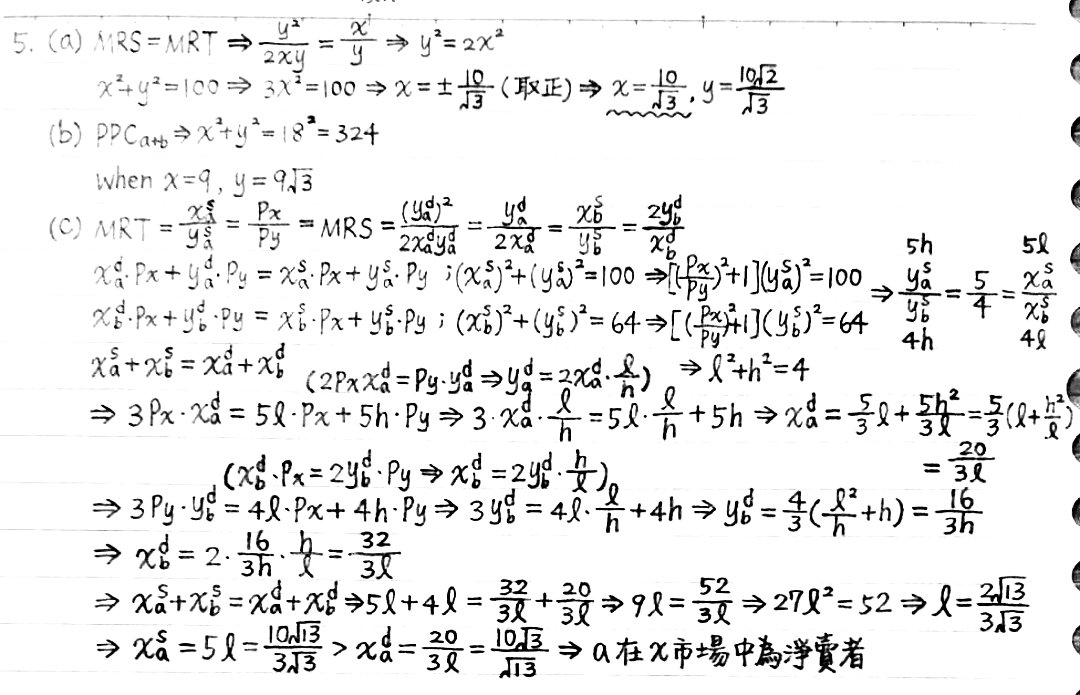
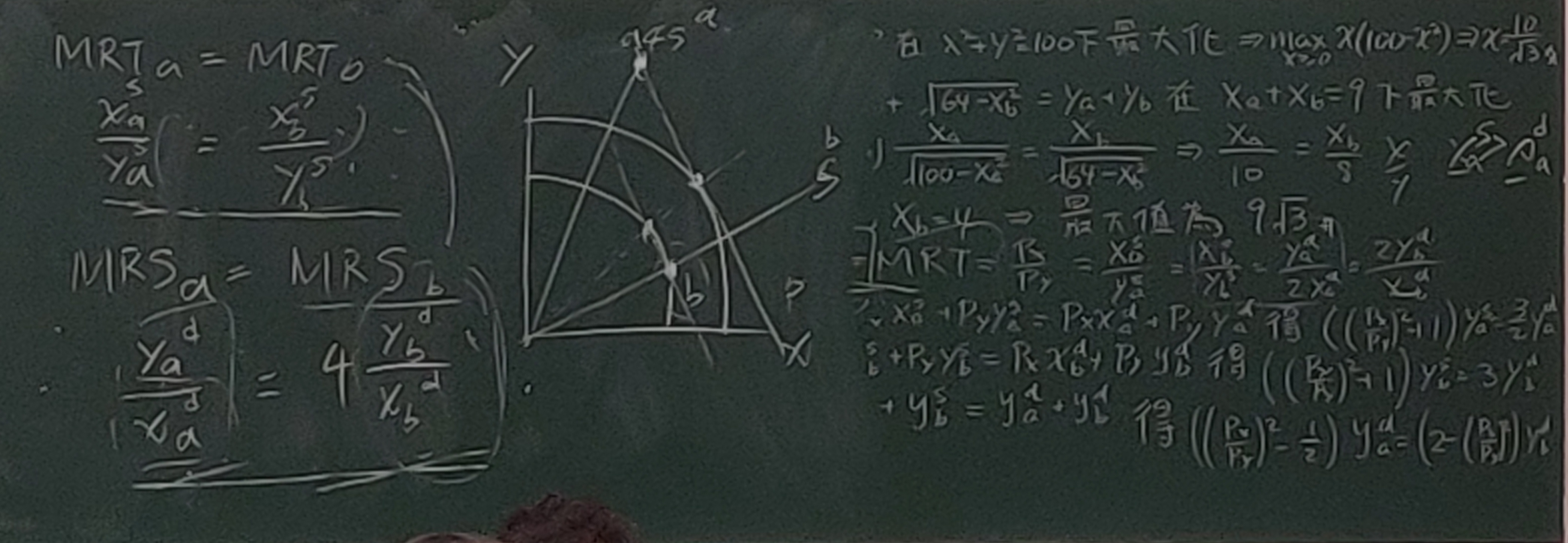
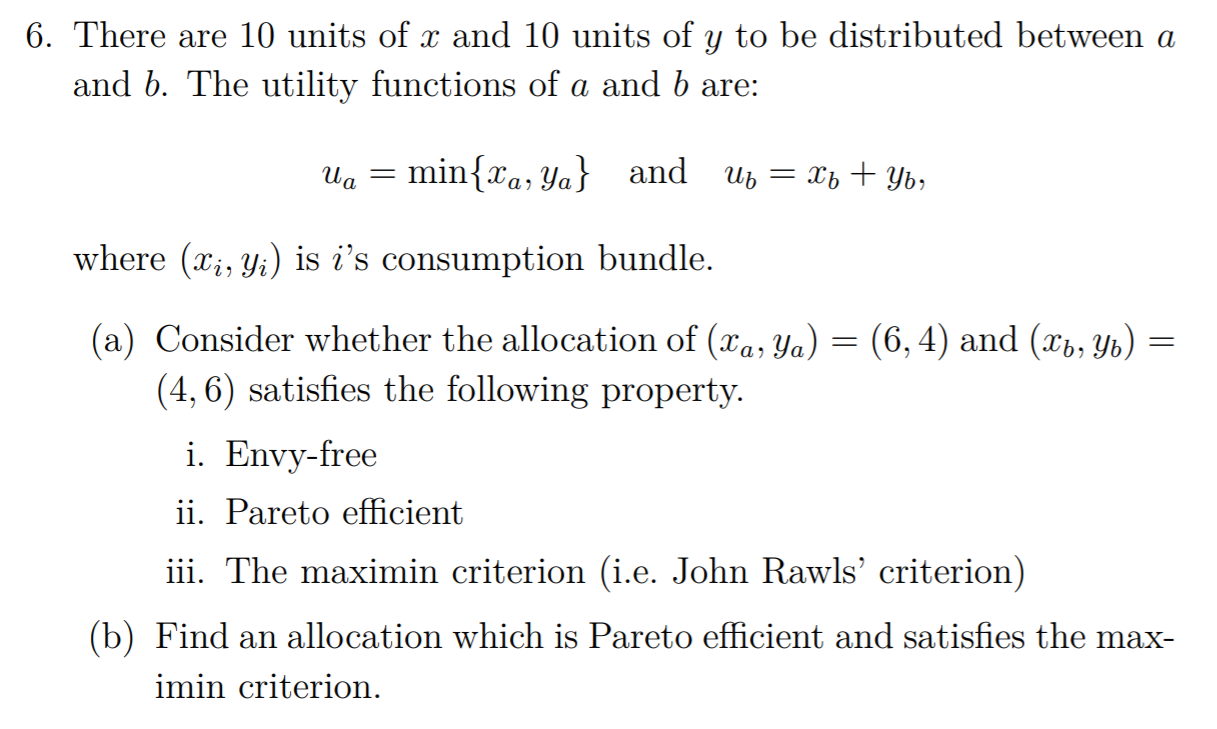
maximum criterion / John Rawls
最小的要最大
e.g. 6.(a)
若 u~a~ < u~b~
則讓 u~a~ 最大 (< u~b~)

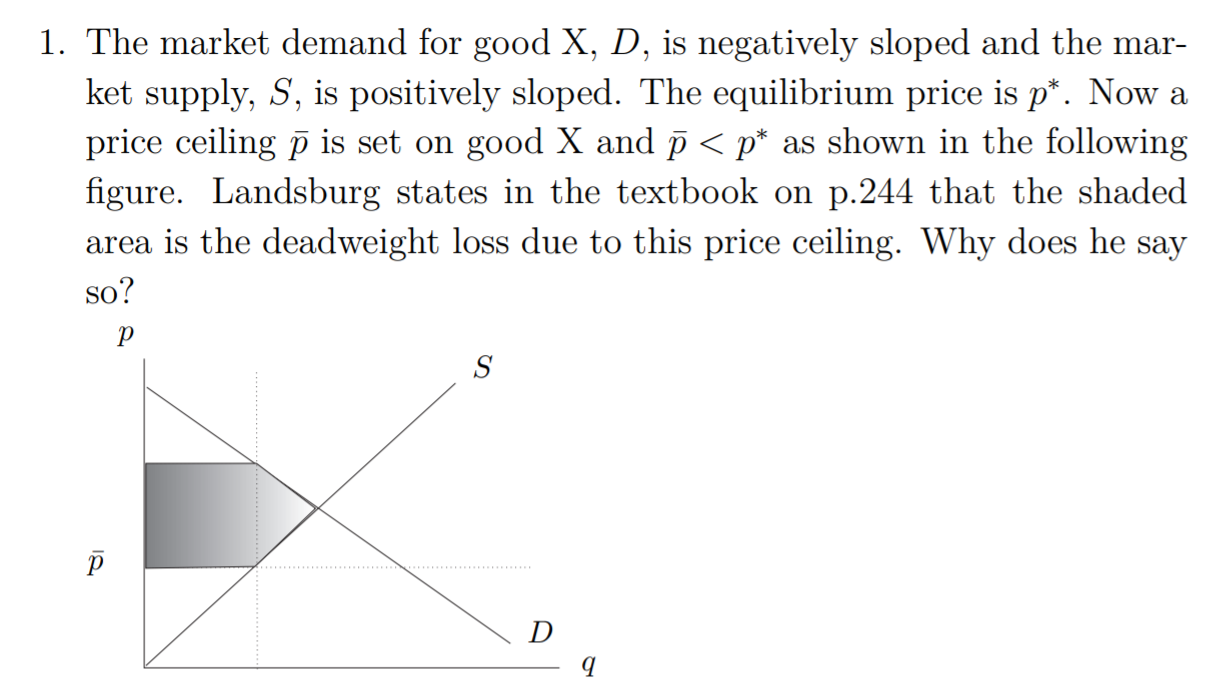 見
見